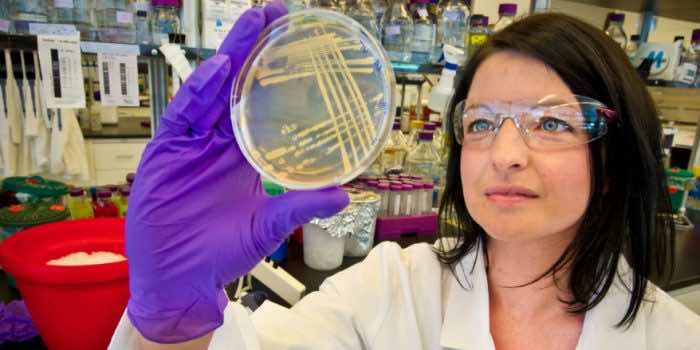Fossil fuels pose a serious threat to the environment. Although we frequently hear about solar energy and electric vehicles, there aren’t many practical alternatives in some sectors. Kerosene and other jet fuels are ideal for this industry due to their high energy density; however, they are also challenging to replace.
To bridge that gap, researchers from the Lawrence Berkeley National Laboratory, the Joint Bioenergy Institute, Sandia National Laboratory, the Pacific Northwest National Laboratory, and the University of California Berkeley started experimenting with a bacterium. They coaxed it to produce a high-energy-density molecule that can be used to produce renewable jet fuel successfully.
“We were motivated by the urgent need for alternative fuels that can replace petroleum-derived fuels. We believe that this is a very important step to slow down the pace of climate change,” said Pablo Cruz-Morales, a microbiologist at DTU Biosustain, part of the Technical University of Denmark, and author of the new study.

“Making poly cyclopropanated fuels (fuels with multiple triangle-shaped carbon motifs) is possible using bacteria. This implies that these fuels, which are very difficult to make with traditional chemistry, may be manufactured sustainably using fermentation processes,” he added.
After Jay Keasling, a chemical engineer at the University of California, Berkeley, approached Cruz-Morales with what he called “an explosive concept,” researchers began looking at ways to make jet fuel from bacteria.
Jawsamycin, which possesses five chiral cyclopropane rings, piqued Keasling’s interest. This chemical has an antifungal action, which targets a critical enzyme in forming the fungal cell wall. Jawsamycin is produced by common soil bacteria from the genus Streptomyces.

When bacteria ingest glucose and amino acids, they break them down, transforming the meal into fundamental building blocks for carbon-to-carbon bonds, just like the human body does when it makes and stores fat.
These carbon bonds are organised as triangular cyclopropane rings of three carbon atoms. This form causes the bond to bend, which necessitates energy.
However, despite its alluring qualities, jawsamycin is hard to produce. Therefore, the researcher therefores found and tinkered with the genes responsible for jawsamycin production and produced a new carbon compound.
“We actually named it fuelimycin (I know it’s a silly name). It is special because it features multiple rings of three carbons; these rings are very difficult to make with chemistry. The fact that such molecules exist naturally is a testimony of the amazing power of nature,” Cruz-Morales said.
“This is important beyond eye-catching rocket applications because so far, there are no practical options for the replacement of RP-1 (used in spaceships), Jet-A (used in commercial planes), and gasoil (used in shipping), which are energy-demanding applications with space constraints. For example, a rocket loses efficiency if it carries a huge volume of fuel like hydrogen-oxygen used in the space shuttle, an electric plane can’t carry a huge battery needed to allow crossing the oceans, a shipping vessel can’t cross the Atlantic only on electricity, and if nuclear energy is used it may pose an environmental or a national security risk,” he added.
This molecule would then need to be processed in the same way that biodiesel is now to ignite at lower temperatures. When lit, the biofuel has enough energy to launch rockets into space.

However, the current problem is to scale up the production of this high-energy-density cyclopropane molecule.
“There are many challenges one faces in scaling any biological process to produce any product. These challenges include increasing the titer, rate, and yield as well as getting the bacteria to behave at a large scale (hundreds of thousands to millions of litres of fermentation tank) as they do in the laboratory (at a small scale),” Cruz-Morales said.
The findings were published in the journal Joule.


